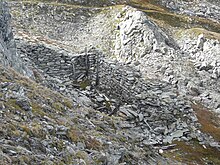- See also: European history
World War I, called The Great War in its time as it was believed to be the war to end all wars, was one of the world's largest armed conflicts. It took place between 1914 and 1918, mainly in Europe and Africa. The Western Front, running through Belgium and Northeastern France, was particularly destructive.
In the 2010s, the centennial anniversaries, and the passing away of the last veterans, have revived interest for the war.
Understand
This war, like the next war, is a war to end war. – David Lloyd George
In 1914, Austrian Archduke Franz Ferdinand was assassinated in Sarajevo by Serbian nationalists. This event sparked tension between Austria-Hungary and Serbia. As the Russian Empire backed up Serbia, other great powers joined the conflict. Though a single event started the war, many historians argue that conflict between Europe's great powers was almost inevitable and debate over which nation is most responsible for the war is still ongoing 100 years later.
World War I lives in infamy as the war that introduced weapons of mass destruction — poison gas — onto the battlefield. It was also the first war in which the recently-invented airplane was used in combat.
The 1919 Treaty of Versailles made the Central Powers, especially Germany, responsible for the war, and liable for harsh reparations.
The war brought down several empires — Austria-Hungary, Germany, Russia and the Ottomans — and sparked the formation of the Soviet Union. The tensions within Europe were never resolved; World War II repeated many tragedies of the first war and introduced new horrors.
Sites
Austria

The war between Austria-Hungary and Italy (1915-18) was mostly static in terms of front movement but saw brutal fighting in next to impossible conditions of a still mostly untouched high mountain range. In the latter years, mining and explosives increasingly became a means of warfare and traces of this are visible to this day
Belarus
- 1 Brest. The site of the notorious peace treaty of Brest-Litovsk between Soviet Russia and the German empire.
Belgium
France
- 3 Verdun. One of the bloodiest battles of this or in fact any war and almost every French soldier who participated in the war was deployed here at some point in time.
Germany
- 4 Kiel. The German navy was stationed here and when the high command wanted them to sail out at a point in time when defeat seemed inevitable, the sailors started what is now known as the November revolution of 1918 and eventually ended up toppling the Kaiser and installing (short lived) soldiers' and workers' councils.
- 5 Manfred von Richthofen's grave (Grave of the "Red Baron"), Südfriedhof (Wiesbaden). One of the predominant flying aces and a pioneer of areial combat, Manfred von Richthofen aka the "Red Baron" has been (re-)buried in Wiesbaden after having prior resting places in Berlin (relocated in the 1970s due to it being too close to the border) and on several military graveyards in Eastern France
Italy

The fighting between Austria-Hungary and Italy between 1915 and 1918 was particularly fierce and fought in harsh terrain. A big part of the war effort where mines and counter mines and sometimes this involved literally blowing up (the tops of) mountains
Turkey
- 6 Gallipoli. The ill-fated invasion of the Ottoman mainland, a brainchild of Winston Churchill, is credited with creating the Australian and Kiwi national "ANZAC spirit" as the Australia New Zealand Army Corps (ANZAC) suffered relatively high casualties.
See also

